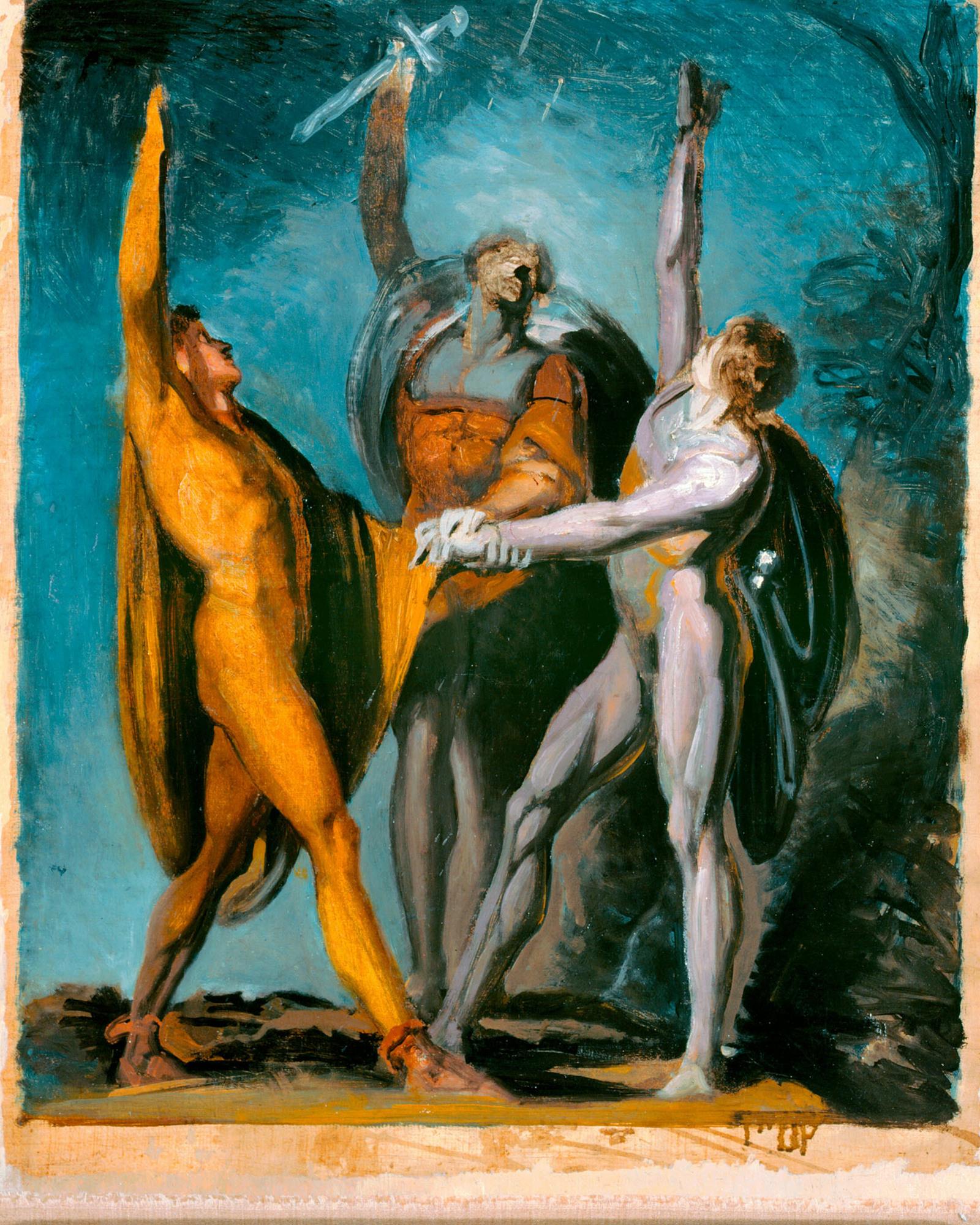Henry Fuseli: The Master of Dramatic and Surreal Art

Henry Fuseli was a Swiss-born artist who became famous in England for his dramatic, imaginative, and often eerie paintings. Born Johann Heinrich Füssli in 1741 in Zurich, Switzerland, Fuseli’s works were filled with energy, passion, and a touch of the supernatural. He is best known for his powerful depictions of myths, dreams, and emotions, creating art that was both captivating and unsettling. Through his bold use of color, light, and shadow, Fuseli made a significant mark on the world of art.
An Early Love for Art and Literature
Fuseli’s love for art began at a young age, but his path to becoming a painter wasn’t straightforward. His family was deeply religious, and Fuseli initially studied theology at the University of Zurich. However, his true passion was for art, so he abandoned his studies to become an artist. He trained in Zurich before moving to London in the 1760s to pursue his career.
In London, Fuseli was inspired by the works of other great artists, and he was especially drawn to the art of the Renaissance and the stories of ancient mythology. He also developed a strong interest in literature and was influenced by writers like William Shakespeare, which became a major theme in his later paintings.
A Dramatic Style and Dark Themes
Fuseli’s paintings were different from those of many other artists of his time. He focused on dramatic, emotional subjects, often depicting scenes from literature, mythology, and dreams. His works were filled with energy, movement, and tension, with figures often shown in twisted or contorted positions.
One of Fuseli’s most famous paintings is The Nightmare, which shows a woman lying in a deep sleep, with a dark, eerie creature perched on her chest. The painting evokes a sense of horror and unease, and it became one of his most iconic works. The Nightmare reflects Fuseli’s fascination with dreams and the subconscious, showing a world where reality and imagination blur together.
Inspiration from Literature and Mythology
Fuseli’s paintings often drew inspiration from ancient mythology and classical literature. He was especially interested in the stories of gods, demons, and heroes, and his works frequently depicted dramatic moments from these tales.
For example, Fuseli painted Titania and Bottom, a scene from Shakespeare’s play A Midsummer Night’s Dream, showing the fairy queen Titania and the weaver Bottom, who has been transformed by magic. Fuseli’s version of this scene is filled with energy and whimsy, showcasing his ability to bring stories to life with vivid imagination.
Fuseli also created works based on other literary figures, including scenes from Milton’s Paradise Lost and the writings of Goethe. His art was deeply influenced by his love of literature, and he often sought to capture the emotional intensity of these stories.
An Influence on Romanticism
Although Fuseli never fully embraced the Romantic movement, he was a major influence on it. His dramatic style and interest in the supernatural inspired many Romantic artists, who were drawn to themes of emotion, imagination, and the unknown.
His ability to create intense, emotional scenes that pushed the boundaries of reality influenced artists like Francisco Goya and the Pre-Raphaelite painters. Fuseli’s work opened the door for later artists to explore new, more dramatic ways of expressing emotion and capturing the mysterious aspects of human experience.
A Lasting Legacy in Art
Henry Fuseli’s work had a significant impact on the world of art, particularly in the areas of Romanticism and the exploration of the subconscious. While he may not be as well-known as some of his contemporaries, his unique style and bold subject matter have earned him a place in art history.
Today, Fuseli’s paintings continue to captivate viewers with their intensity and drama. His use of light, shadow, and dynamic compositions makes his work stand out, and his ability to create haunting, surreal scenes that blur the line between dream and reality remains influential.
Henry Fuseli’s legacy lives on through his powerful art, which invites viewers to explore the depths of human emotion and the mysteries of the imagination. Through his dramatic and imaginative paintings, Fuseli showed the world that art could not only represent reality, but also dive into the mysterious and fantastical realms of the mind.